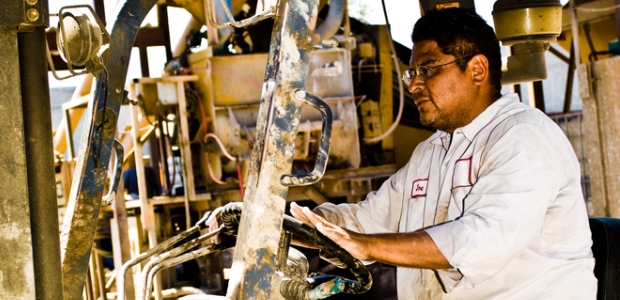
Engaging Our Mature Workers for Better Sustainability, Safety, and Efficiency
Prioritization of tasks and planning the work are the keys to keeping the momentum of the team.
- By Diana Schwerha
- Sep 01, 2017
In many fields today, the labor force is tight. Employers can't find new employees and recent hires may jump ship for the next best opportunity. What is a company to do when the work keeps coming in but the staffing isn’t always adequate? The answer is simple: Go back to your loyal, older employees and ask them to share knowledge and improve processes so that efficiencies can be created within safe working environments. Not only will you end up with better processes, but your employees will be motivated by your concern and acknowledgement of them.
But the question remains, how to do this? The first step is to identify the goal. This can be done by creating a cross-functional team and identifying the challenges within your workplace. The team should have both mature and new employees on it, as well as maintenance, production, supervision, and quality representatives. During these meetings, the team members should agree on their goal(s), such as reducing lost-time injuries, reducing ergonomic risks, identifying leading indicators, or improving efficiencies, so that demand can be met with current staffing (and maybe no overtime!).
Within a series of meetings, the goals can then be mapped onto processes that can be improved. For instance, you may want to reduce lost-time injuries, but in order to do that you need to know which tasks have caused the injuries and what are the risk factors involved. At this step, it's important to prioritize so that that the team can start improving processes in an incremental way and see small successes in a relatively short amount of time. The prioritization of tasks and planning the work are the keys to keeping the momentum of the team. At this point, you will also start to see leaders emerge who will be able to set the new culture and encourage buy-in from employees who are not always present in the meetings.
One of the reasons it's important to have an age-diverse team is that your mature employees bring a wealth of knowledge to the table. They know what has been tried and what has worked. They also have insider knowledge on how work demands affect both younger and older employees. Most importantly, your older employees are willing to help, and they are the ones who most likely are still going to be on site when the new hire leaves.
Reducing Musculoskeletal Injury Risks
When you're brainstorming your projects, one of the most impactful types of improvements that can be made to processes is that which reduces the risk of musculoskeletal injuries. Musculoskeletal injuries can not only lead to pain and future limitations, but they also are the most expensive type of injury for a company. If you can reduce forces, improve worker postures, eliminate slips and fall risks, and reduce repetitions, you will be decreasing the possible risk of an injury.
Improvements to the process that reduce injury risk also have the potential to increase the quality and efficiency of a process. For example, let’s say you have a process where you can reduce manual materials handling and also redesign the workstation so that the employee can maintain a more neutral posture. That employee will most likely not fatigue as much. The less-fatigued employee may be able to focus on quality more and also maintain the desired production rate. A good improvement creates a win-win situation: better for the employee and better for production. Integration of safety with process improvement is what supports better and more sustainable processes.
As an ergonomist, I have always seen processes this way. I don't think that you can separate ergonomics from production. We were fortunate to receive funding from the Ohio Bureau of Workers' Compensation that allowed us to create a training program focused on integrating safety with process improvement. Our training program consists of core materials that allow a team to identify, prioritize, improve, and document interventions at their site. The materials allow the employees to constantly integrate safety with production. They encourage communication and the breaking down of silos.
In addition to the core tools, the package has training modules on reducing distraction and improving kaizen events. The training package includes PowerPoints, instructions, and the tools (which are Excel based). All of the materials may be accessed free of charge and are available at https://www.ohio.edu/engineering/safety-training/.
Here's an infographic titled "The Economics of Ergonomics" that may be helpful. We encourage you to start integrating ergonomics with process improvement in order to retain your older workers, improve communication, and create efficiencies!
This article originally appeared in the September 2017 issue of Occupational Health & Safety.